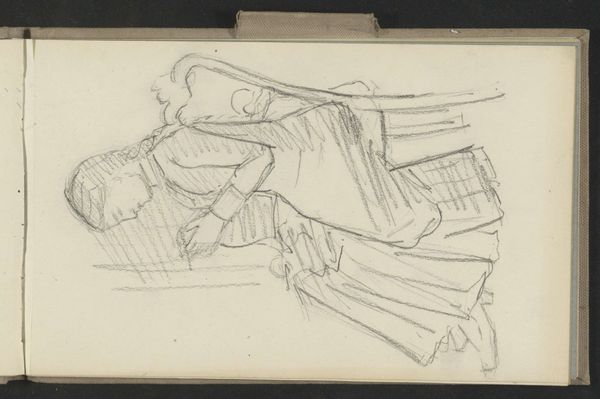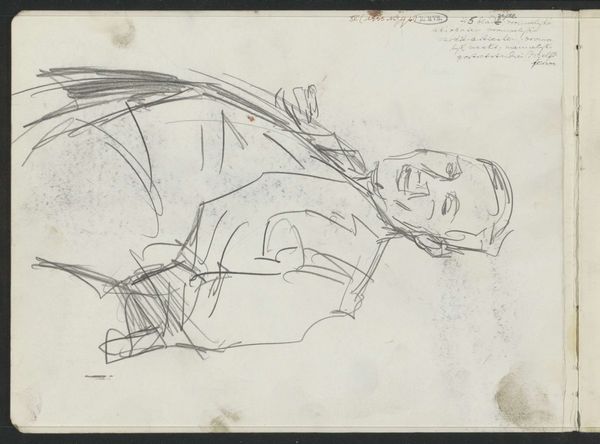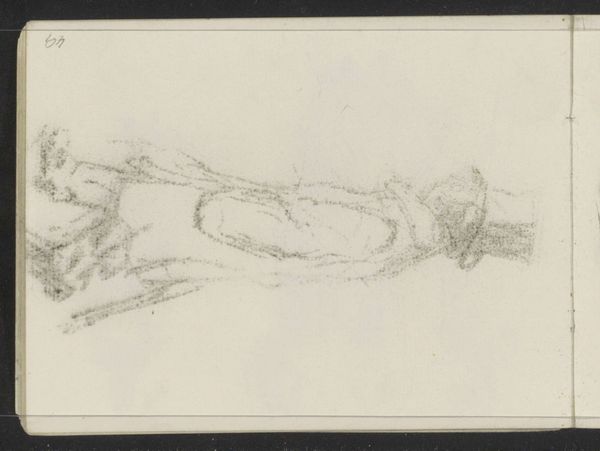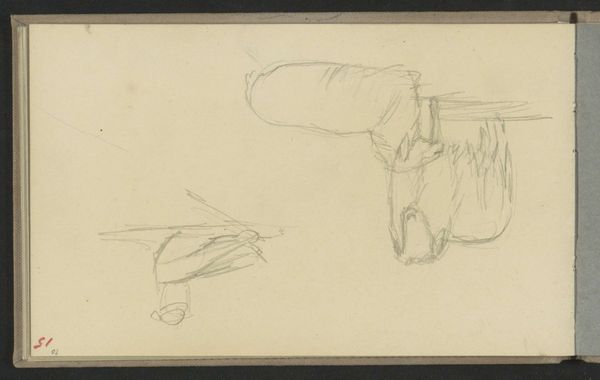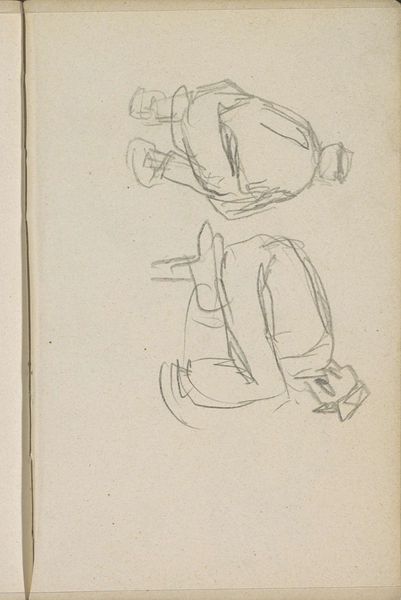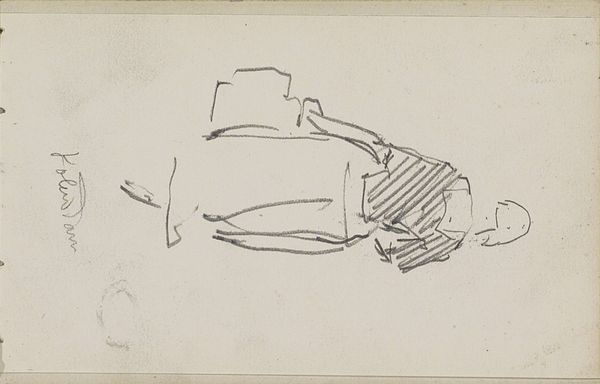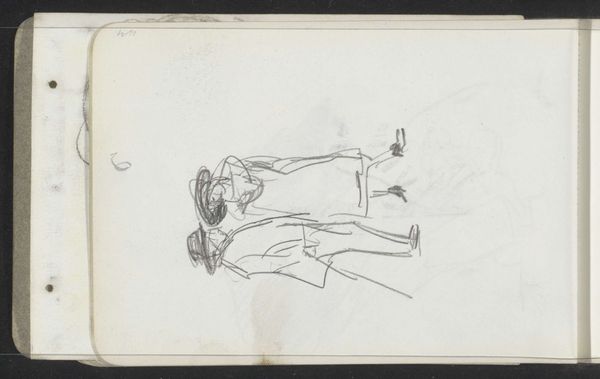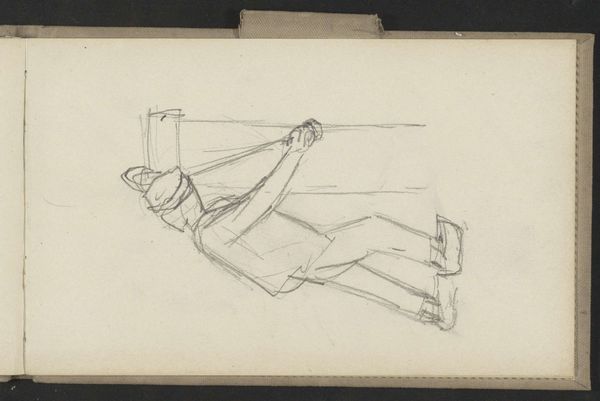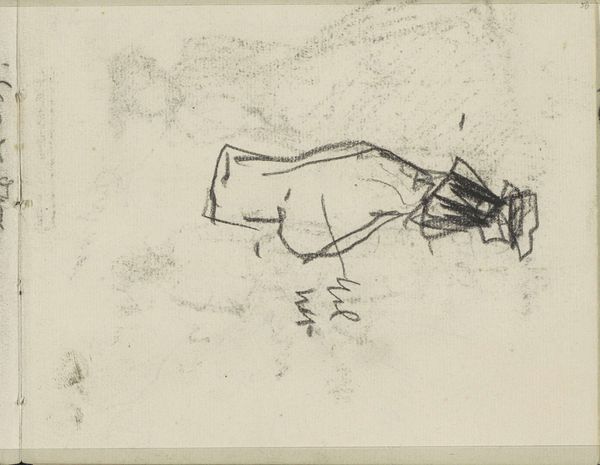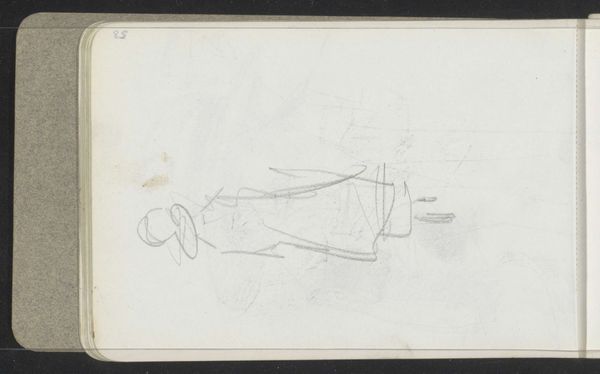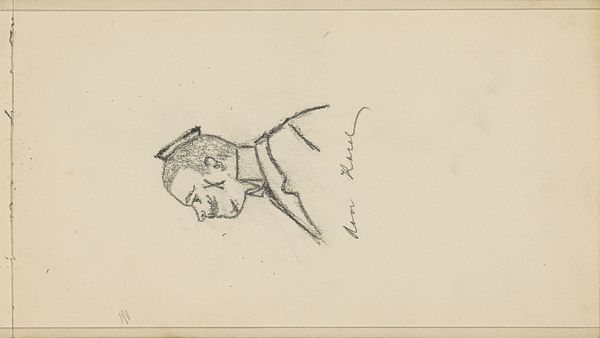
drawing, paper, pencil
#
portrait
#
drawing
#
light pencil work
#
sketch book
#
incomplete sketchy
#
paper
#
personal sketchbook
#
idea generation sketch
#
sketchwork
#
pen-ink sketch
#
pencil
#
sketchbook drawing
#
genre-painting
#
storyboard and sketchbook work
#
sketchbook art
#
realism
Copyright: Rijks Museum: Open Domain
Curator: Let's discuss this intriguing sketch entitled "Man op klompen met een hark," or "Man in Clogs with a Rake," attributed to Jozef Israëls. The museum estimates it was created sometime between 1834 and 1911. It appears to be a pencil drawing on paper. Editor: Immediately, I'm drawn to the rawness of the sketch. It feels so immediate, almost as if we’re glimpsing the artist’s initial idea. The simplicity in its execution conveys a great deal. Curator: Israëls often focused on the lives of the working class. Given the subject’s clogs and rake, and the fact that Israëls was a key figure in the Hague School which portrayed Dutch peasants, we can speculate on how this piece reflects social realities and identities. How might a peasant have viewed their position within Dutch society during this period? Editor: Focusing on the visual, observe the strategic use of line to imply form. There's a compelling tension between the defined contours of the man's clogs, which feel quite deliberate, and the looser, almost frantic, lines used to depict his body and the rake. Semiotically speaking, it almost feels like the artist prioritizes those cultural signifiers. Curator: That tension you observe resonates with the socioeconomic reality of the period. While industrialization was advancing, the agricultural sector, where someone wearing clogs would work, experienced intense transformations, and for some this would imply intense precarity and hardship. Do you see the somewhat rushed rendering you described as symbolic of labour exploitation? Editor: It’s fascinating to consider. One could also read the unfinished quality simply as a preliminary study—a way for the artist to work through spatial arrangements or test the pose of the figure. A more abstract reading sees the lack of embellishment as stripping away any distractions and offering the very essence of the subject’s humanity. Curator: That resonates, certainly. Perhaps the 'unfinishedness', that stripped-down essence, highlights how easily such labouring bodies could be dismissed and dehumanized. Israëls’ art aimed to bring visibility to these overlooked lives, challenging viewers to consider the worth and dignity inherent in every individual, regardless of class or occupation. Editor: It’s a valuable insight. This little drawing holds a mirror to both its own aesthetic choices and to the historical context that shaped it, inviting multiple interpretations. Curator: Precisely. And through interrogating Israëls’ choices and contextualising them, perhaps we allow contemporary audiences to grapple with the enduring questions around class, identity, and representation within our societies.
Comments
No comments
Be the first to comment and join the conversation on the ultimate creative platform.

